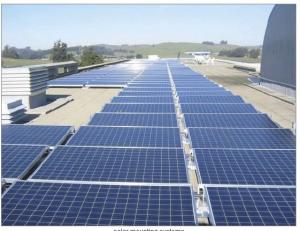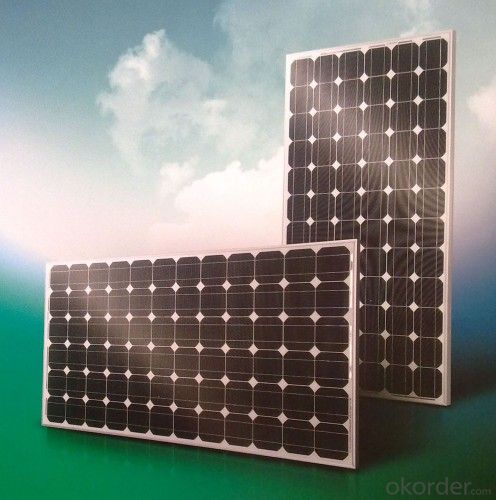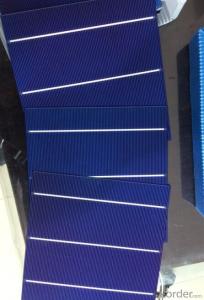Solar Panel A Grade High Efficiency from China
- Loading Port:
- China main port
- Payment Terms:
- TT or LC
- Min Order Qty:
- 1 m.t.
- Supply Capability:
- 100000000000 m.t./month
OKorder Service Pledge
OKorder Financial Service
You Might Also Like
Quick Details
CNBM Solar is a world-leading and Vertical integrated manufacturer of high-performance with Silicon,
Wafer, Cells, Modules, which convert sunlight into electricity for residential, commercial, and utility-scale
power generation.
The capacity of CNBMSolar is reach to 1GW, and make sure each year our shipment capacity is more
Than 700-800MWs, at the same time, we have set up the largest solar power station with our partner
in Ukraine.
CNBM is a Quality + Service oriented company with“Excellence at Each Step” approach, composed of
the finest components from TUV and IEC-certified partners around the world, CNBM modules consistently
undergo a variety of trials at the company’s Test & Development Centre, ensuring peak performance
capabilities. The company is committed to develop and provide the world with clean and renewable energy
to ease the energy shortages as well as human kind’s impact on the environment.
Specifications
A-grade cell high efficiency 5W-300W PV solar panel
1.Higher conversion efficiency
2.quick delivery
3.Excellent in quality
Technical Parameter:
Good Quality 185W Solar Panel | |
Peak Power-Pmax(W) | 185W |
Open Circuit Voltage-Voc(V) | 44.2 |
Maximum Power Voltage-Vmp(V) | 36 |
Short Circuit Current-Isc(A) | 5.4 |
Maximum Power Current-Imp(A) | 5 |
Maximum System Voltage | 1000V DC |
Maximum Series Fuse Rating | 10A |
Power Tolerance | -1~+3% |
Temperature Coefficients of Pmax | -0.45%/℃ |
Temperature Coefficients of Voc | -0.348%/℃ |
Temperature Coefficients of Isc | 0.031%/℃ |
Nominal Operating Cell Temperature | 44.5±2℃ |
Standard Testing Condition(STC) | Irradiance:1000W/m²;Temperature:25℃;AM=1.5 |
Qualification Test Parameters | |
Operating Temperature | -40℃~+85℃ |
Storage Temperature | -40℃~+85℃ |
Pressure Bearing | ≥5400Pascal/m² |
Wind Bearing | ≥5400Pascal/m² |
Mechanical Characteristics | |
Cell Size | Mono 125*125mm±0.5 |
No.of Cells | 72pcs(6*12) |
Dimension | 1580*808*40mm |
Weight | 15.5Kg |
Glass | 3.2mm High Transmission,Low Iron |
Frame | Anodized Aluminum Alloy |
Junction Box | IP65Rated |
Internal Diodes | 3 Bypass Diodes |
Cable | 1*4.0mm² Length 900mm |
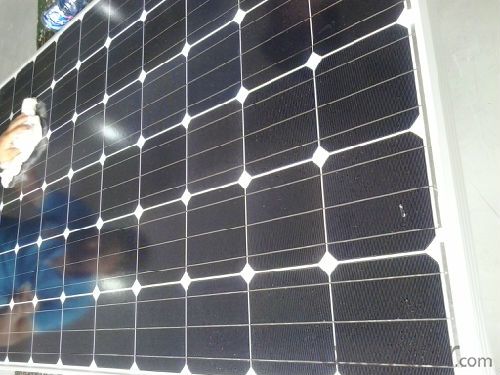
More Details-Photovoltaic, PV
Photovoltaic cells or panels are thin layers of semi-conducting material. Electrical charges are generated. When exposed to sunlight, they produce electricity which is fed into the domestic supply as direct current. A number of cells connected together behind glass form a solar panel.Solar panel refers either to a solar hot water panel, a common type of a solar thermal collector, or to one or more solar photovoltaics (PV) modules, electrically connected and mounted on a supporting structure.A PV module is a packaged, connected assembly of typically 6×10 solar cells. Solar PV panels constitute the solar array of a photovoltaic system that generates and supplies solar electricity in commercial and residential applications. Each module is rated by its DC output power under standard test conditions, and typically ranges from 100 to 320 watts. The efficiency of a module determines the area of a module given the same rated output – an 8% efficient 230 watt module will have twice the area of a 16% efficient 230 watt module. There are a few solar panels available that are exceeding 19% efficiency. A single solar module can produce only a limited amount of power; most installations contain multiple modules. A photovoltaic system typically includes a panel or an array of solar modules, an inverter, and sometimes a battery and/or solar tracker and interconnection wiring.
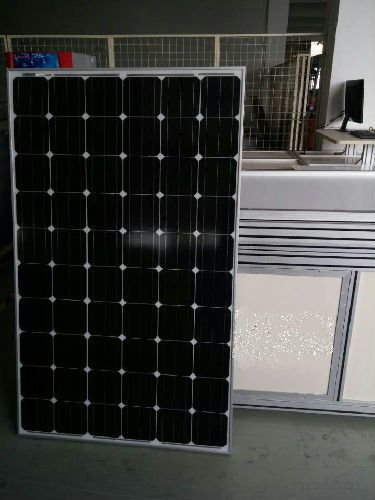
FAQ:What's your product warranty ?>
12 yrs free from defects in materials and workmanship;No less than 90% within 10yrs and no less than 80% within 25yrs
- Q:What is the accurate explanation for the sun solar cell power system? How does it work?
- The sun solar cells power system is the newly developed technology which can change the sunlight power into the energy used in our work and life.
- Q:How do solar cells perform in coastal areas?
- Solar cells can perform well in coastal areas as they can harness sunlight effectively, even in regions with high humidity and salt exposure. However, the presence of saltwater and corrosive elements may require additional maintenance and cleaning to ensure optimal performance and longevity of the solar panels.
- Q:Can solar cells be used for air conditioning?
- Yes, solar cells can be used for air conditioning through the utilization of solar-powered air conditioning systems. These systems convert solar energy into electricity, which is then used to power air conditioning units, enabling cooling without relying on traditional energy sources.
- Q:Can solar cells be installed on any type of roof?
- Solar cells can be installed on most types of roofs, including flat, sloped, and even curved roofs. However, the feasibility and efficiency of installation may vary depending on factors such as roof orientation, shading, structural integrity, and local regulations. It is advisable to consult with a professional solar installer to determine the suitability of your specific roof for solar panel installation.
- Q:Are solar cells affected by shade or partial shading?
- Yes, solar cells are significantly affected by shade or partial shading. Even a small amount of shade on a solar cell or panel can have a significant impact on its energy production. Shadows cast on solar cells can reduce their efficiency and overall power output, as shading prevents sunlight from reaching the shaded areas, thereby reducing the amount of energy that can be converted into electricity. Therefore, it is essential to ensure that solar panels are installed in areas where they can receive maximum sunlight exposure throughout the day to maximize their performance.
- Q:How do solar cells perform in mountainous regions?
- Solar cells can perform well in mountainous regions, as long as they are properly installed and adjusted to maximize sunlight exposure. The high altitude and clear air in mountainous areas can actually enhance the performance of solar cells by allowing more direct sunlight to reach the panels. However, the angle at which the panels are mounted may need to be adjusted to account for the tilt of the terrain and ensure optimal sunlight absorption.
- Q:Are solar cells affected by shade?
- Yes, solar cells are significantly affected by shade. Even a small amount of shade can cause a significant decrease in the power output of solar cells.
- Q:Can solar cells be used for water desalination?
- Yes, solar cells can be used for water desalination. Solar-powered desalination systems harness the energy from sunlight to convert seawater or brackish water into fresh water. This process is known as solar desalination and involves using solar panels to generate electricity, which in turn powers the desalination system. Solar desalination offers a sustainable and environmentally-friendly solution to address water scarcity in regions with abundant sunlight.
- Q:How do solar cells perform in areas with frequent hurricanes?
- Solar cells can still perform well in areas with frequent hurricanes, provided they are designed and installed with specific considerations in mind. Reinforced mounting systems, robust construction materials, and proper installation techniques can enhance the durability of solar panels against strong winds and debris. Additionally, grid-connected solar systems with battery storage can provide reliable power during power outages caused by hurricanes, making them a resilient energy solution for such areas.
- Q:How do solar cells impact carbon emissions?
- Solar cells have a significant positive impact on carbon emissions as they generate electricity without burning fossil fuels, thus reducing reliance on carbon-intensive energy sources. By harnessing the sun's energy, solar cells help minimize greenhouse gas emissions, combatting climate change and promoting a cleaner and more sustainable energy future.
1. Manufacturer Overview |
|
|---|---|
| Location | |
| Year Established | |
| Annual Output Value | |
| Main Markets | |
| Company Certifications | |
2. Manufacturer Certificates |
|
|---|---|
| a) Certification Name | |
| Range | |
| Reference | |
| Validity Period | |
3. Manufacturer Capability |
|
|---|---|
| a)Trade Capacity | |
| Nearest Port | |
| Export Percentage | |
| No.of Employees in Trade Department | |
| Language Spoken: | |
| b)Factory Information | |
| Factory Size: | |
| No. of Production Lines | |
| Contract Manufacturing | |
| Product Price Range | |
Send your message to us
Solar Panel A Grade High Efficiency from China
- Loading Port:
- China main port
- Payment Terms:
- TT or LC
- Min Order Qty:
- 1 m.t.
- Supply Capability:
- 100000000000 m.t./month
OKorder Service Pledge
OKorder Financial Service
Similar products
New products
Hot products
Hot Searches
Related keywords

